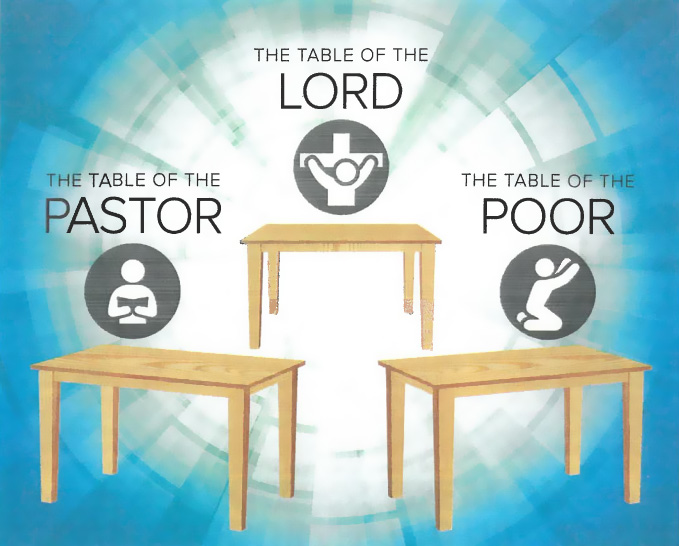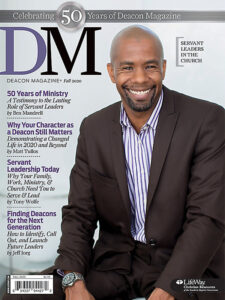The Three Tables: A Proposal for the Organization of Deacon Bodies

Shortly after I began serving as pastor of Central Baptist we were discussing how to organize ourselves as a deacon body. I mentioned to the body that the earlier Baptist model of The Three Tables might be helpful. After briefly explaining what the tables were a deacon in the room said, “Wait, say that again.” Then a fascinating conversation ensued.
I was familiar with The Three Tables and had read and chewed on it a good bit, but, in truth, I was unaware that the issue would even arise in that meeting. I give our deacons all the credit for taking the suggestion and fleshing it out in the wonderful way that they have.
After there was agreement in the room that this model might be of real service to us in our particular situation, we began to discuss what a reclaiming of this model might look like. Our deacons finally landed on an idea. At the end of the meeting we had decided upon creating three rotating teams within our deacon body that correspond to the three tables. Every four months the teams rotate. Thus, every year every deacon will serve each of the tables. As there is no longer a necessity for deacons to serve The Table of the Pastor by raising his salary each month, we have interpreted this table to mean any and every way that the deacon body can be of assistance to me. I value this table greatly, just as I value the other two.
Over almost a decade now, we have stayed with this model. It has become a helpful model, a helpful rediscovery of an old truth. The genius of this model is that it enables us to organize all of the various functions of the deacons into three solidly biblical categories. While the specific terminology of The Three Tables is not explicitly in scripture, we are happy to argue along with many of our forebears that this model has been proven to be an effective tool in the organization of the various tasks placed upon deacons in the New Testament.
Regardless of the specifics, the model is definite enough to keep us tethered to these very biblical ideas: The Lord’s Supper, care for the poor, and pastoral assistance.
Furthermore, the model of the three tables is flexible enough to be adaptable to the particulars and uniqueness of congregational practice in the modern age yet is defined enough to at least caution churches and deacon bodies about wandering too far afield from practices that should be seen as primary for the deacon body in any church.
Thus, The Table of the Lord may encompass many things: moving the communion table into place for the observance of the Lord’s Supper, the purchase of the bread and juice, the cleaning of the trays or instruments for serving the elements, and the practicalities of helping with the dissemination of the elements to the congregation. Similarly, The Table of the Pastor can mean many things. It might refer to the spiritual advice that deacons give to their pastor. It might refer to helping him with visitation in the church. It certainly includes praying for the pastor! It might, given a specific congregation and their agreed-up organization, mean many things. And the Table of the Poor might encompass any number of benevolence strategies.
Regardless of the specifics, the model is definite enough to keep us tethered to these very biblical ideas: the Lord’s Supper, care for the poor, and pastoral assistance.
There is something to be said for a good model, even if the model is from many years ago. I would like to propose that The Three Tables be brought out of the dusty history books on our shelves and be put on…well…the table for consideration.
Wyman Richardson is the pastor of Central Baptist Church in North Little Rock, AR. He and his wife, Roni, have one daughter, Hannah. Wyman is currently editing the eight-volume Collected Writings of James Leo Garrett Jr., 1950-2015.


